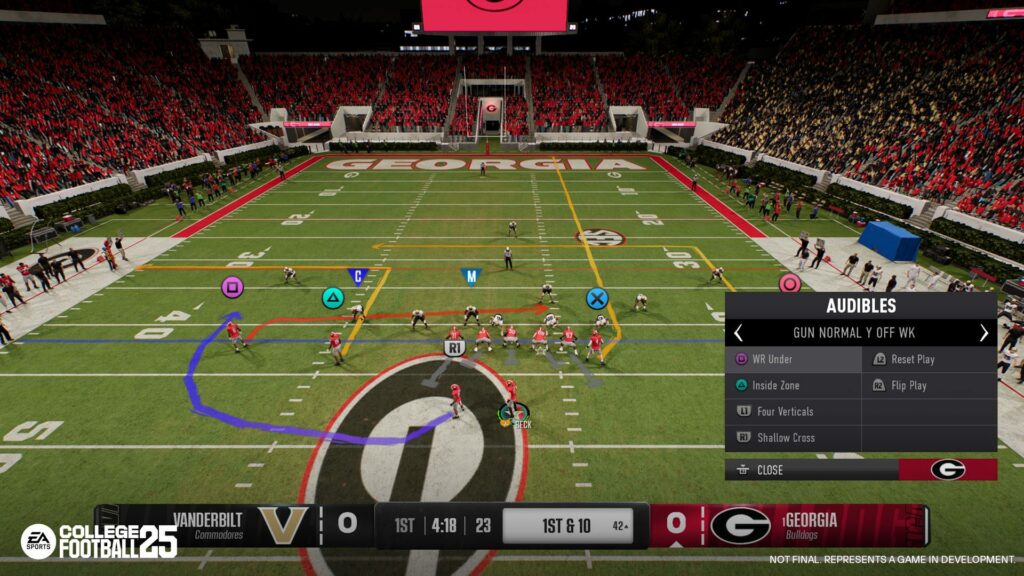The world of NCAA football is an intricate mesh of strategy, skill, and unyielding determination. For players and coaches alike, having the best NCAA 25 playbook can make all the difference in turning a promising season into a championship run. This guide delves into the essentials of effective playbooks, helping teams leverage their strengths and minimize weaknesses while navigating the competitive landscape of college football. Understanding the nuances of these playbooks will not only elevate individual performance but also enhance teamwork and collaboration on the field.
As the NCAA landscape evolves, so do the strategies that define it. The best NCAA 25 playbook is characterized by a blend of innovative plays, solid fundamentals, and adaptability to various in-game situations. Coaches must consider their players’ skills and attributes when crafting a playbook that stands out. This article will explore different aspects of creating the best NCAA 25 playbook, from the foundational elements to the advanced strategies that can lead to victory.
Whether you’re a seasoned coach or a passionate player, understanding the dynamics of the best NCAA 25 playbook is crucial. The right playbook can be a game-changer, allowing teams to stay competitive in a rapidly changing environment. Join us as we navigate through the best practices, tips, and expert insights to help your team flourish on the gridiron.
What Makes a Playbook the Best NCAA 25 Playbook?
A playbook is not just a collection of plays; it’s a comprehensive strategy designed to maximize the potential of a team. The best NCAA 25 playbook integrates various elements that contribute to its effectiveness:
- Variety of Plays: A diverse range of offensive and defensive plays keeps opponents guessing.
- Player Strengths: Tailoring plays to leverage the unique strengths of players enhances performance.
- Adaptability: The ability to adjust plays based on game situations is critical for success.
- Clear Communication: Ensuring that all players understand the playbook is vital for execution.
How Can Coaches Effectively Implement the Best NCAA 25 Playbook?
Implementing the best NCAA 25 playbook involves several key strategies:
- Thorough Training: Conduct regular practice sessions to ensure players are familiar with the plays.
- Feedback Loop: Encourage players to provide feedback on plays that work and those that don’t.
- Game Simulation: Use scrimmages to simulate game conditions and test the playbook.
- Adjustments: Be prepared to make adjustments based on player performance and opponent strategies.
What Types of Plays Should Be Included in the Best NCAA 25 Playbook?
The best NCAA 25 playbook should include a mix of the following types of plays:
- Run Plays: Essential for controlling the tempo of the game.
- Pass Plays: Crucial for exploiting defensive weaknesses.
- Trick Plays: Can surprise opponents and create scoring opportunities.
- Defensive Schemes: Formations that counteract the opponent’s offensive strategies.
Which Teams Utilize the Best NCAA 25 Playbook?
Several college football teams are known for their innovative playbooks that have led to success on the field. These teams often adapt their strategies based on their roster and opponents, making them formidable contenders:
- Clemson Tigers: Known for their dynamic offense and aggressive defense.
- Alabama Crimson Tide: A blend of traditional and modern play-calling that emphasizes power and speed.
- Ohio State Buckeyes: Renowned for their versatile offensive schemes that keep defenses on their toes.
- Oklahoma Sooners: Their high-tempo offense is a nightmare for opposing defenses.
What Are Common Mistakes in Crafting the Best NCAA 25 Playbook?
Even the most seasoned coaches can make mistakes when developing a playbook. Here are some common pitfalls to avoid:
- Overcomplicating Plays: Simplicity often leads to better execution.
- Ignoring Player Feedback: Players on the field often have valuable insights.
- Neglecting Defense: A strong offensive playbook is useless without a solid defensive strategy.
- Failing to Adapt: Sticking to a rigid playbook can lead to predictable gameplay.
How to Evaluate the Effectiveness of the Best NCAA 25 Playbook?
Evaluating a playbook's effectiveness requires analyzing various metrics and feedback:
- Scoring Efficiency: How often does the team score when executing plays from the playbook?
- Player Performance: Are players performing to their potential with the current playbook?
- Game Outcomes: Analyze wins and losses to determine if the playbook is effective in different situations.
- Adjustments Made: Track how well the team adapts during games based on playbook execution.
What Resources Are Available for Developing the Best NCAA 25 Playbook?
Coaches and players can leverage a variety of resources to develop their playbooks:
- Online Courses: Many platforms offer coaching certification programs and tactical courses.
- Books: There are numerous publications dedicated to football strategy and playbook development.
- Software: Playbook design software can help visualize and organize plays efficiently.
- Networking: Engaging with other coaches and sharing insights can provide fresh perspectives.
Conclusion: What’s Next for the Best NCAA 25 Playbook?
In conclusion, crafting the best NCAA 25 playbook is an ongoing process that requires dedication, creativity, and a willingness to adapt. As the game evolves, so must the strategies employed by teams. Coaches should continually assess their playbooks, ensuring they are not only effective but also innovative enough to keep pace with the competition. By understanding the fundamentals of playbook development and incorporating the best practices outlined in this article, teams can enhance their chances of success on the field and make their mark in NCAA football history.
Exploring The Depths Of Hot Links: Understanding Deep Hot Link Technology
Tragic News: Abby And Brittany Hensel Died - A Look Back At Their Lives
The Unfolding Story Of Michael David Gershenson: A Journey Through Life


